There are stories you come across while researching the history of beer, sometimes, that set the mind boggling on its springs. Such a tale is the one we can call The Marsden Murders.
It centres on Arthur Eagles Marsden, born in 1849 in Pimlico, London to a dynasty of operative brewers. His father, Robert, was a brewer, possibly at Watney’s brewery in Pimlico, his grandfather, George Eagles Marsden, was a brewer living in Lewisham, then in Kent, according to the 1841 census, his uncle George Eagles Marsden junior was an operative brewer living in Heather Street, Kingston upon Thames in 1851 and his mother Anna was the daughter of John Hector, owner of the brewery in Blandford St Mary, Dorset that was later taken over by Hall & Woodhouse.
By 1861 Robert Marsden had moved with his family to the village of Stapenhill, on the edge of Burton upon Trent, where he was undoubtedly working at one of the many breweries in Burton, quite likely, given later history, the Meakin family’s Abbey brewery, in Abbey Street. Arthur, Robert’s oldest son, very likely learned the brewing trade in Burton, but by the early 1870s he was in Halifax, Nova Scotia, working as a brewer.
There he met a young woman named Catherine “Kate” Vaughan, three years his senior, daughter of Patrick Vaughan and Mary Sullivan, both from Cork in Ireland, who had arrived in Halifax around 1844. One source claims that Catherine’s parents “took her away from school” because they were afraid she was about to convert to Catholicism, and forced her “against her will” to marry the Protestant Arthur Marsden. This clashes with the known facts: Catherine was baptised in the Catholic cathedral in Halifax, and she was 26 or so, when she met Marsden, so not “at school”.
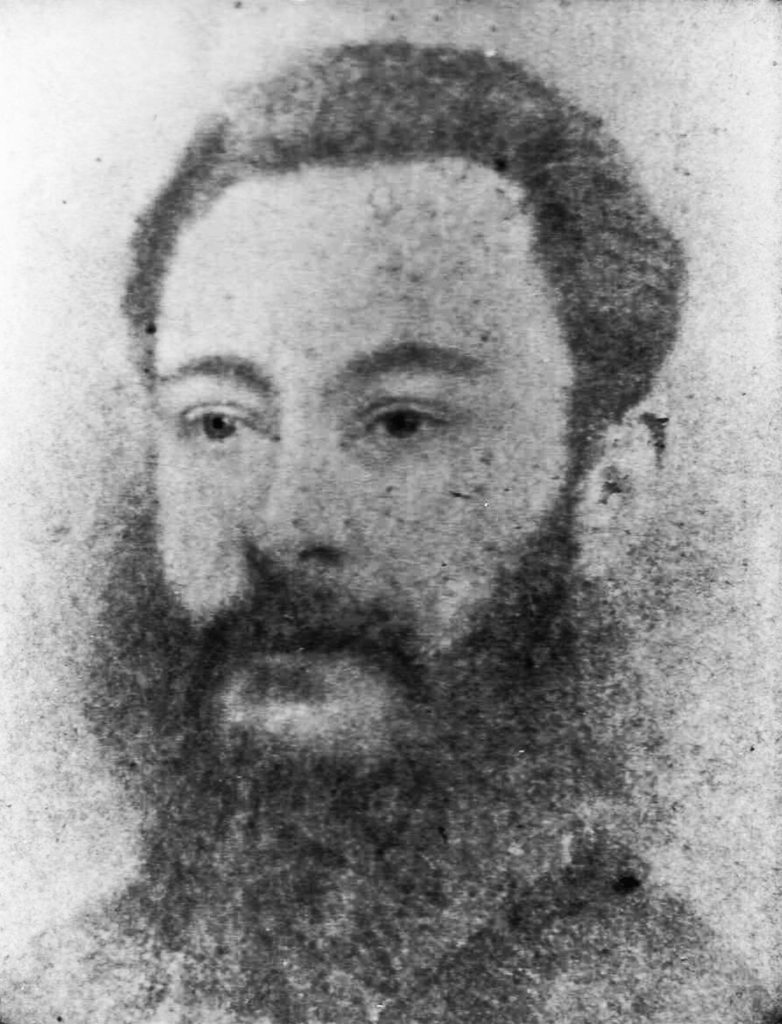
Indeed, Arthur and Catherine were actually married in Manhattan, New York in January 1873, suggesting there were difficulties about them marrying in Halifax, possibly because of the difference in religion. If there were problems with Catherine’s family about her marrying an English Protestant, they could not have been that severe, as one of the witnesses at the Manhattan wedding was her brother John. Arthur Marsden later claimed to have brewed in the United States, so it may be that he was working in New York
Exactly nine months later, in October 1873, Catherine was back in Halifax, where she gave birth to a son who was given a set of Marsden family first names, Robert, for his grandfather, and Eagles from Arthur Marsden’s great-grandmother, Anne Eagles. Soon after the new family returned briefly to England, and then, in December 1874, sailed from Southampton for India, where Arthur had evidently been offered a post as a brewer by the brewing entrepreneur Henry Meakin. Henry was nephew to George Meakin, owner of the Abbey brewery in Burton, and his father, Henry senior, had worked as a brewer in the town before switching to farming. Doubtless Meakin knew Arthur Marsden from the time when the Marsden family were in Burton.
Henry Meakin junior had come out to India in 1869, aged 25, to take control of the Simla Old Brewery, in the Himalayan hill station now known as Shimla, which had been founded in 1860. Its height, almost 7,500 feet above sea level, made it vastly cooler than the Indian plains and thus very popular with recuperating Europeans – and also one of the few places in India where brewing beer was possible without expensive cooling equipment. (There were, eventually, nine or so breweries running in a thousand-mile arc along the foot of the Himalayas, all at 5,000 feet or above, built to supply the garrisons of the British Raj with beer.)
By October 1871 Meakin had taken over another established brewery in Kasauli, 20 miles to the south, to run alongside the Simla Old Brewery. The “Kussowlie” brewery had been started by a former East India Company officer called Captain Robert Beavan in 1850 to serve the troops in the settlement. In 1874 the Times of India reported that “Her Majesty’s troops in the Hills and at Umballa” (a garrison town 120 miles north of Delhi) had “taken kindly” to the beer from Henry Meakin’s brewery in Kasauli, and “actually prefer it to the beer supplied to the Commissariat from home [ie Britain]. This is a strong test, for Her Majesty’s forces are the keenest of critics everywhere … and find faults in such things as beef, bread and porter, which are frequently beyond the ken of their Commanding Officers.”
The same year Meakin took over a third brewery, which had been opened in 1863 at Jeolikot, on the road three miles from Nainital, a hill station 6,800 feet up in the outer Himalayas, 180 miles south-east of Simla and 215 miles east of Delhi. The water at the brewery “resembles more that of Burton than does any other source in India,” it was claimed in 1882. However, the brewery passed through “several” owners, before being acquired by Meakin. He placed Arthur Marsden in charge as manager and brewer, and Marsden “obtained a contract to supply the troops at Naini Tal [sic], which tripled his operations.”
The Naini Tal Brewery Company was brewing XXX double stout at three rupees for a dozen pints in 1876 and two rupees a gallon in casks, as well as pale ale and XXX strong ale: “Customers supplying their own coolies can obtain their Beers at the Brewery by applying for Delivery Orders from the Agents.”. The brewery looks to have been rebuilt in 1877, as Marsden advertised in July that year “to Parents and Guardians” for a pupil “to learn Brewing and Malting,” starting from October 1, when “the spacious new premises, both Brewing and Malting, will then be in working order.” If required, “the Pupil can be taught the English, Canadian and American, in addition to the Indian System of Brewing, at a slight increase of premium, the advertiser having brewed in some of the largest Breweries in each of these countries.”
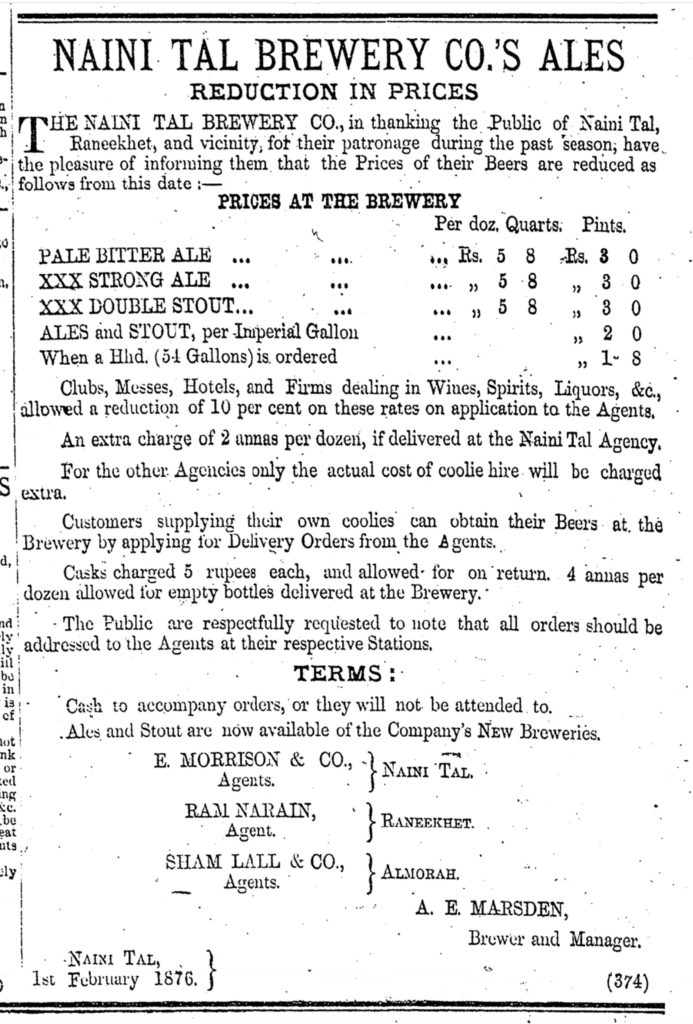
The Marsdens lived at Nainital until at least the latter half of 1881, with Catherine giving birth to six more children, two of whom died. Some time before October 1879, Arthur was joined at Nainital by his younger brother Hector Lionel Marsden, born in 1858, who had also trained to be a brewer. By 1883, Arthur had moved to Henry Meakin’s Simla Old Brewery, where in December that year his wife gave birth to another son.
A third Marsden brother, the youngest, John Cecil, born in Stapenhill in 1862, had also come out to India as a brewer, and in 1882 he was put in charge of Henry Meakin’s one-year-old brewery at Panch Pool, Dalhousie. This was a cantonment named for the Marquess of Dalhousie, British governor-general of India from 1847 to 1856, 125 miles north-west of Simla and 6,500ft up. In September 1884, after two years in Dalhousie, and at the age of 22, John shot himself, an act that led the Civil and Military Gazette to editorialise about the pressures on “a European in this country living alone a dreary cheerless existence among uncongenial surroundings, who has rushed upon a fate which those more fortunately situated think he might have escaped if he had the safeguards of society and companionship.”
Hector Marsden moved on to the Lucknow Brewery, 260 miles east of Delhi in the plains of North India, one of several breweries run by Henry Meakin’s big rival Edward Dyer, which had been opened in 1882. The Lucknow brewery, which used refrigerating machinery to help make beer in a climate where even in the coldest month, January, average highs were 76ºF/24.5ºC, was the first successful brewery in the plains. Hector was there by July 1886, when he was advertising for sale in a local newspaper “one silver pedometer, only used on one or two occasions.”
Arthur Marsden and his family look to have continued living in Simla until 1890, when they moved to Dalhousie, for Arthur to take charge of the brewery where his youngest brother had committed suicide six years earlier. The children had all been educated at Catholic schools in Darjeeling, but Arthur had become a Freemason in 1878, and was increasingly anti-Catholic, which was causing strains in the household. The strains became worse when Catherine and her two oldest children, Robert and Mabel (who had been born in Nainital in 1876) began attending mass at a Catholic chapel in Dalhousie run by Belgian priests. Arthur’s fellow Masons in the Dalhousie lodge were under-impressed, and one allegedly told him: “Listen, Marsden, if your wife was mine, I would lodge a bullet in her skull this instant.”
From then, it was claimed, Arthur began to threaten to murder his family, and in September 1893 his wife told one of the Belgian priests: “I am certain that one day or other he will kill us all.” The following month, on the evening of October 10, an argument between Arthur and Mabel saw Catherine try to intervene. A furious Arthur hurled an ink bottle at her head. Robert, who had just had his 20th birthday, tried to defend his mother, and Arthur grappled with his son, dragged him out of the house and threw him down a small ravine on the steep hillside. Robert was bruised but otherwise uninjured, and the two returned to the house. Arthur went upstairs, and Robert and Mabel, attempting to act as if all were well, sat at the family piano and played, while their mother wept in an adjoining apartment.
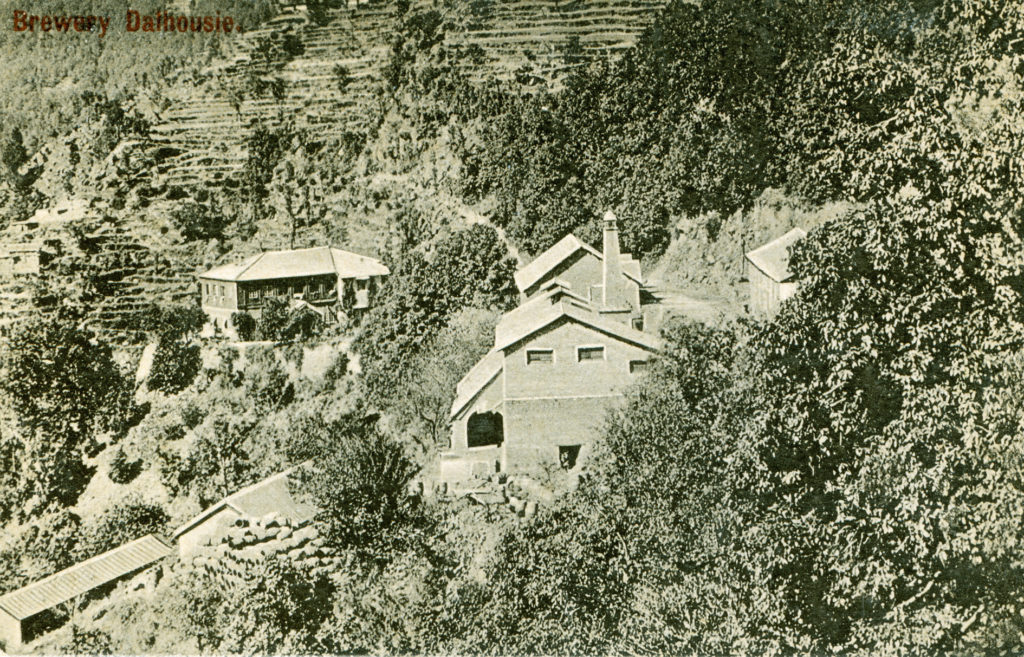
Suddenly Arthur reappeared, went into the apartment where his wife sat, and the horrified youngsters heard two loud reports. Their father had just put two bullets into the head of their mother. Robert rushed into the room, and Arthur shot him in the head, two or three times. He held the revolver close enough to both his victims that they suffered powder burns to their faces. Mabel stood in the doorway, hands clenched, looking at the horror before her, as her father raised his arm and shot her too, the bullet passing through her cheeks. She rushed bleeding out of the house, pursued by her father, and when, in the darkness, she fell, despite the family syce, or coachman, who had appeared, pleading with Arthur not to kill the girl, Mabel’s father bent over her and shot her in the head again, declaring: “Now you are sure to die.”
After this carnage, Arthur returned to the house and prepared a telegram to be sent to Henry Meakin to tell him that another manager would be needed immediately for the brewery. He then wrote several more letters, including one to Lieutenant Barton, the Assistant Civil Commissioner, detailing the events of the evening and declaring himself ready to be arrested. The messages were handed to his coachman to deliver to the post office, and Arthur then went out to the brewery and calmly set in motion the necessary actions for the next day’s brewing.
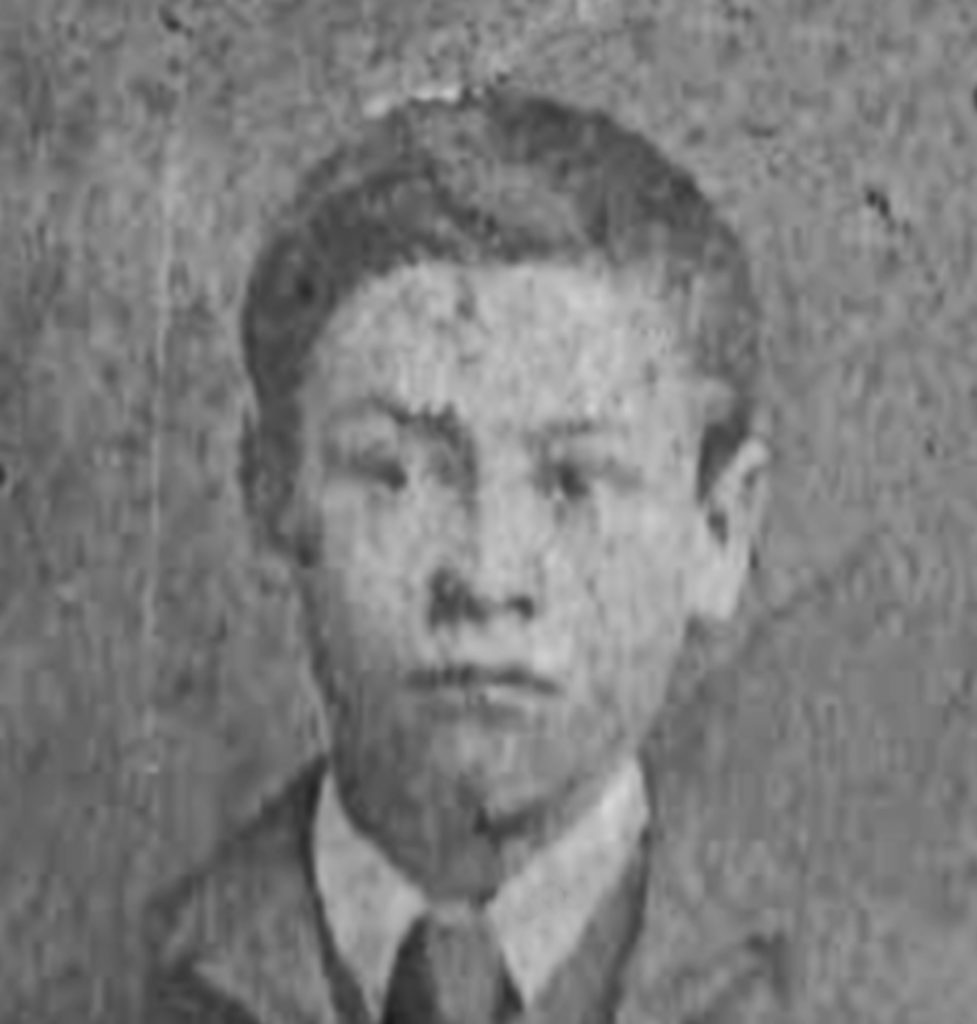
The coachman, whose name was Abdul Gafar, was on his way to the post office when he found Mabel lying on the path, and rushed to the house of Captain Donnelly nearby. The girl was carried to the Donnellys’ home by servants, and a doctor, who happened to be the Donnellys’ son-in-law, examined her and found that the second bullet her father had fired had glanced along her skull and lodged in her neck. She was still alive, but death had been very close, and initial reports said she was not expected to live.
Meanwhile, Arthur’s letter having been delivered to Lieutenant Barton, a squad of police led by the assistant commissioner, together with the civil surgeon, Dr O’Neill, had arrived at the brewery. There they found Catherine and her son lying dead where they had been shot. The police, amazingly, were unarmed, and all were thus unwilling to go hunting in the dark a madman with a revolver. Lieutenant Barton was getting ready an urgent appeal to the officer in charge of the local army depot to send 100 or 200 men to scour the countryside the next day and, if necessary, shoot Arthur down, when a policeman came up and said that the murdering father had surrendered, quietly and calmly. He was taken away to the hawalat, or jail, where he remained under a strong guard while awaiting interrogation.
Arthur’s version of events, as related to the investigators, was that on the evening of the murders he had been threatened by his son, whom he was constantly upbraiding and finding fault with, and Robert had attempted to shoot his father, unsuccessfully. Arthur then shot his son, he claimed, in self-defence, and went on to shoot his wife and daughter in a fit of madness.
The inquiry into the murders accepted that there was “corroborative evidence” that Robert had levelled a gun at his father but that it had “snapped on an exploded cartridge”: Dr O’Neill, who had seen the bodies, stated at first that he was positive there was a gun on the floor beside Robert on the floor. As a result Arthur was sent to the Chief Court in Lahore to face charges of murdering his wife, the attempted murder of his daughter and “culpable homicide not amounting to murder” in the case of his son, though later Dr O’Neill said in court only that there “might have been” a gun on the floor. The trial was delayed until Mabel was well enough to give evidence. Meanwhile one newspaper in India wrote, ten days after the murders, that “popular feeling is turning round in sympathy” with Arthur: his wife, it was claimed, was “a shrew”, and “the evidence elicited in the trial goes a long way to show the miserable life his family has led him at home. His troubles seem to have dated from the day they were converted from Protestantism to Catholicism; and the subject of Masonry, Mr Marsden being a strong Mason, has always been a bitter bone of contention.”
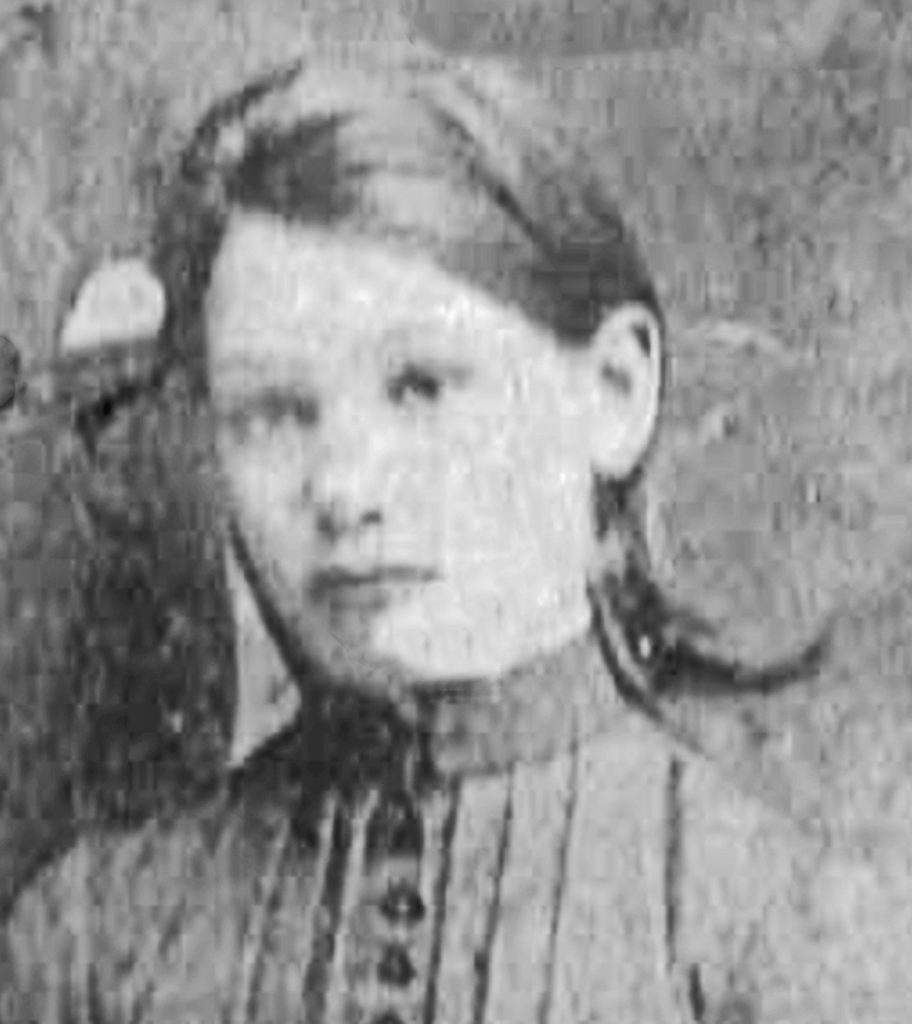
At the trial, Arthur insisted that after he had argued with his son over Robert’s laziness, Robert had threatened to shoot him, he had run for his own revolver, and when Robert aimed a gun at him, he fired his revolver in self-defence. Mabel repeated her original statement that Arthur had shot her mother first and then her brother, and denied that her brother was lazy. She gave evidence that her father used to throw chairs and bottles at her mother, and had “a very bad temper, which used to get worse about the time of the new moon.”
The judge, in his summing up, emphasised the gun that might have been on the floor, as apparent evidence that Arthur’s account was believable, and stressed that Mabel’s evidence might not be completely reliable, after she had been shot in the head. He also suggested that it was possible Arthur was sane when he shot his son, believing he was defending himself, and insane when he shot his wife and daughter. The jury, evidently swayed by these arguments, found Arthur not guilty of murdering his son, on the grounds of self-defence, and guilty of causing the death of Catherine and of wounding Mabel, but they acquitted him of murder and attempted murder because of being temporarily insane, the last two verdicts possible under Indian law but not English law.
After the verdicts were announced, lawyers and members of the public went up to Arthur and gave him “hearty congratulations”, a reaction which appalled one Indian newspaper: “That the sober and educated members of an Anglo-Indian community should be offering congratulations to a man whose hands are stained with the blood of his whole family, and who could be regarded best as an irresponsible homicide would have seemed a week ago inconceivable.”
Arthur was not freed, however: the presiding judge, Sir Meredyth Plowden, said that he should be kept in custody in the Lahore Central Jail pending the orders of the Punjab government, to which the case would be reported. In February 1894 the Punjabi government, showing sense rather than sympathy, ruled that Arthur was a “dangerous criminal lunatic, who is sane except when in the least excited,” and orders were issued that he be detained in the Bhowanipur Lunatic Asylum, Calcutta. In 1902 he was sent to Port Blair, in the Andaman islands, where the Indian government often exiled dangerous political prisoners, though he was apparently allowed to roam about: in 1906 he was trying to marry “a native Christian girl”. In 1907 there were proposals to transfer him to a lunatic asylum in England, but the following year he was moved instead to the lunatic asylum in Lahore. He was still apparently being held in a lunatic asylum in 1914: what happened to Arthur over the next 17 years before his death in Lahore in February 1931, aged 85, I have been unable to discover.
Meanwhile there was one more tragedy to be played out among the Marsden brothers. Hector Marsden moved at some point to Solan, 15 miles to the south of Shimla, where he was manager from at least 1894 at the brewery opened there by Edward Dyer in 1877. A young subaltern in the 2nd Battalion Royal Munster Fusiliers, who was stationed in Solan, wrote admiringly in June 1894: “Mr Dyer and his manager Mr Marsden at the Brewery here dispense hospitality with a lavish hand whenever we go over and as they have an excellent billiard table some of us are generally to be found there in the afternoon.” Hector was still in Solan in December 1895, when he was advertising a Webley revolver for sale, “in excellent condition”. Soon after this he returned home to England, where he was apparently living for a while in Derbyshire, possibly with or near his three sisters, who were lodgers in a house in the village of Baslow, in the Derbyshire Peak District. [Update: there appear to be Marsden family links with Derbyshire – see comments from Peter Moynihan and Colleen Murphy below.]. In July 1897 Hector and one of his sisters arrived in Seaford, on the Sussex coast, presumably on holiday, and were staying at a house in Carlton Terrace, Broad Street. On the night of Sunday July 18 Hector retired to his bedroom, apparently well. The next morning he was found on the floor of the bedroom with a revolver wound to the head. He was 39 years old.
Alfred Marsden’s daughter Mabel stayed in India, and went on to have a long career as a teacher, working at convents in Darjeeling and Simla, finally dying in 1960, aged 84. Of the four other children of Arthur and Catherine still alive at the time of the murders, who were all apparently away at Catholic schools in northern India themselves in 1893, Arthur junior, born 1878 in Nainital, became a professor of history and taught at St Xavier’s College, a Catholic establishment in Calcutta, dying in 1959 aged 81; Charles, born in Simla in 1883, died of smallpox about 1909; Cecil, born in Nainital in 1879, fought in the First World War in East Africa with the Calcutta Volunteer Battery, an artillery unit, and died in Calcutta in December 1929, aged 49 – he had been badly disfigured by a tiger at some time, and was looked after by his brother Arthur until his death; and Ethel, born in Nainital in 1880, who married a civil servant working for the Indian government in Simla in 1914, died in 1939. Ethel was the only one of Arthur and Catherine’s childen to have children herself: those children were brought up in India, and educated by nuns, who told them that Catherine and Robert had died on the same day of cholera, a story the family continued to believe.
With many thanks to Colleen Murphy for her researches into the Marsden family, without which this tale would have been very much poorer.
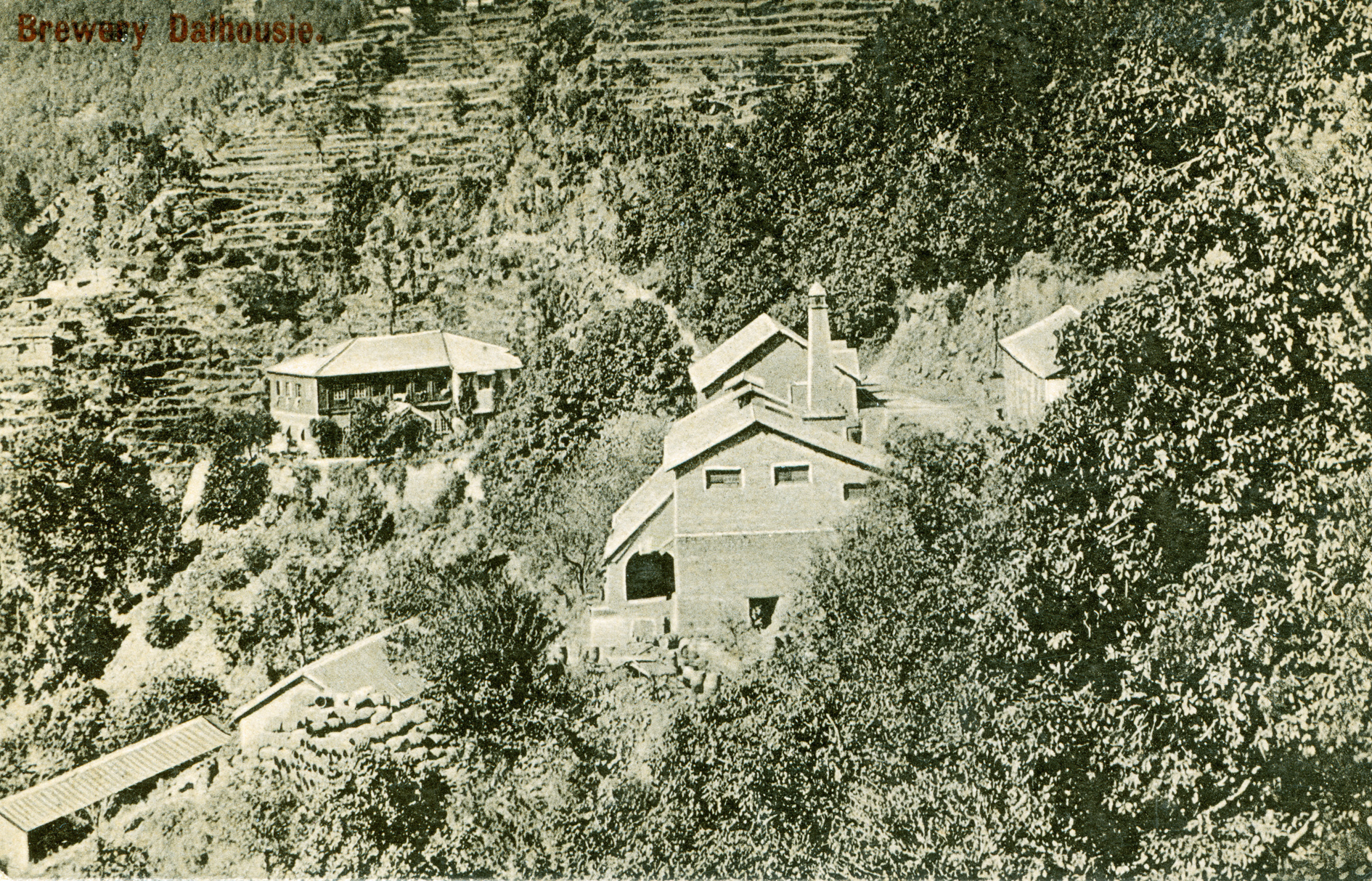

An excellent read as usual Martyn, of particular interest to me because of George Eagles Marsden’s involvement with the Anchor Brewery in Lewisham. I was also interested in the reference to Baslow in Derbyshire because, when I was trying to find the origins of G.E. Marsden snr, I found that a George Marsden was baptised on the eleventh of November 1773 in… Baslow! His 1841 census entry merely states that he was not born in Kent and his age is given to the nearest five year point (as required for that census) giving a birth year of 1776. However, the entry in the burial register of St Mary’s, Lewisham, states his age in August 1846 as seventy-two years, which would give a birth year of 1774. Not conclusive proof, but it seems likely to me that the Marsdens were perhaps from Derbyshire .
Brilliant, Peter, given that the sisters were living in Baslow in 1891 I think that’s about as conclusive as we’re going to need. Doubtless when Robert Marsden was living in Stapenhill they popped over to Baslow on occasions, perhaps to see surviving relatives.
I live in Dalhousie India and going for walk till that ruined brewery as it’s near to my house .I was curious about the history. Now today I read all story . But why they had destroyed those buildings ? Oh God I’m imagine the story .
Thank you very much for your comment, and it’s fascinating to hear the brewery buildings are still there, albeit in ruins. Do you have any photographs?
Very interesting article as I am the granddaughter of Ethel Marsden, her daughter Cynthia being my mother. Cynthia and her siblings Geoffrey Arthur and Daphne were born in Simla. My mother did tell me the story of these murders, however she understood they were poisoned by servants including Mabel who did indeed survive miraculously. How harrowing and traumatizing for Mabel to live the rest of her life with those memories. She used to write copious letters to Cynthia until her death. By then Cynthia and her husband and children were living in Canada. Prior to WW2, Cynthia and her parents and siblings moved to England ……. the family never returned to India. Geoffrey was a squadron leader in the RAF and reported missing in action in 1940. Ethel and her husband died during wartime too. We never knew any details surrounding their deaths. Thank you for posting this article.
I just wanted to add to your thoughts on George Eagles Marsden Sr’s date and place of birth. For date of birth his name is inscribed on the Marsden altar stone in the Churchyard of St Mary, Lewisham. His date of birth is given as 8 September 1774 which would make him around 72 years old at the time of his death in 1846.
His marriage to Mary Perkins took place in Lewisham and on the document by their signatures they have each written where they are from (I am assuming). For George he states Stapleford, Essex and Mary is Shadwell, Middlesex.
One of the marriage petitions for George’s parents has his mother Ann Eagles, 17 years old, a minor and of Stapleford Abbot, Essex receiving permission from her father John Eagles to marry James Marsden. They married on 20 October 1774 in Wanstead, Essex, a month after George was born. So from this I would assume that George Eagles Sr was born in Stapleford Abbot.
As for Robert Marsden’s daughters, as adults, living in Baslow perhaps since they had spent some of their childhood years close by, they chose this area in the Peak District. An article I saw mentioned that the Marsden name was the 2nd most common name in the Baslow area during the 1700s. Perhaps they did indeed have relatives in this region.
Just some ideas.
Having gone back over my research Colleen, I quite agree with everything you say regarding George Eagles Marsden snr’s place of birth. My reference in Baslow was a red herring, although there may still be family connections to the Marsden ‘hotspot’ in and around Balsow.
Although James Marsden was described as ‘of this parish’, i.e. Wanstead, when he married Ann Eagles, he was described on the marriage licence paperwork as ‘os St Leonards, Shoreditch’.
[…] not often we get tales of true crime in the world of beer but Martyn Cornell has turned up a particularly sad example in the Marsden […]
Thanks for this Martyn – great colour for my own research into Dyer. I wonder if you could throw any primary sources my way?
If you haven’t found them yet, the Times of India is available via ProQuest and, and the British Library gives access to South Asian papers up to 1922 on the World Newspapers Readex site. The Indian Government also has its records available at something called Abhilakh Patal, which is clunky and hard to navigate but can turn up gems.
In rewriting my entry in ‘Kentish Brewers and the Brewers of Kent’ as regards George Eagle Marsden’s involvement with the Anchor Brewery, Lewisham, I have pushed your ‘dynasty’ back a bit further Martyn. Ann Eagles’ father, John Eagles, was a brewer! When he married at St Dunstans & All Saints, Stepney, in 1754 he gave his occupation as a brewer and in May of 1787 he was described as a ‘bankrupt brewer, of Stapleford Abbotts, Essex, now of Lewisham, Kent’. He died on 15th October 1793 and was interred in the vault at St Mary’s, Lewisham, which was later to receive the remains of George Eagles Marsden. It seems reasonable to suppose that John Eagles may have been a practical brewer at the Lewisham brewery when owned by Abraham Constable and that his grandson learned to brew with him.
Interesting article. Glad to have stumbled across it. My 2nd great grandfather, Thomas Charles Martin, brewed for Allsopp’s in Burton and his son John Griffiths Martyn brewed in Dalhousie, dying there in 1906. Your article has added flavor to my research into my family’s brewing heritage. Cheers!
That’s very interesting, Chadwick. Do you have any details of John Griffiths Martyn’s career? You nmay be interested to know that the Allsopp’s name has just been revived …
I’m still in the early days of research, having previously focused on my direct ancestor, Henry Montague Martyn. Now that I have time to look into his siblings, I do know that two of his sisters were married to William Joseph Pickering (1866-1946), another Burton Brewer. The National Brewery Centre in Burton was very helpful in researching Thomas C Martin, so I’ll reach out to them regarding John Griffiths and the others. I’m currently obsessed with Dalhousie since John Griffith Martyn’s brother Percy was married in Dalhousie in 1899, so there’s more to learn!
I’ve been sent some pictures of the Dalhousie brewery site today by the nice young woman who commented above, Raksha – I must get round to putting them up on this blog …
I was till recently posted in Dalhousie, and spent much time researching the history of the inception of the cantonment, and digging out the names of as many units and personnel of the British Indian Army who were stationed there, as possible. The research took me to the civil and military cemeteries in the town to corroborate certain information I obtained from Army Lists. Would you be interested in a photograph of the page of the Register of Interments with the names of the Marsdens, buried on 13 Oct 1893 in Section VI of the Civil Cemetery, in grave Nos 162 (Robert Mansden, 20, son of AE Marsden) and 163 (Mary Agnes (not Catherine), wife of AE Marsden). The letters “RC” are inscribed below the date of burial against both names.
Regards.
Yes, thank you very much, I certainly would be interested in that photograph. I wonder why Mrs Marsden was buried under the names Mary Agnes … my guess is that that was her “baptismal” name when she was received into the Catholic church.
Would you e-mail me so that I can mail you the photograph.
I am currently researching my family tree.
Arthur Eagles Marsden is my cousin 4 times removed,
I went online out of curiosity to see if he was anything to do with Marston’s Brewery in Burton, although the name is spelt different and stumbled across your article which I found really interesting .
It helped me fill in a few gaps regarding my family tree.
Thank you for this interesting but tragic information.
To think that two of his brothers commited suicide by shooting and Arthur shot his wife and chldren.
Very happy to have helped.